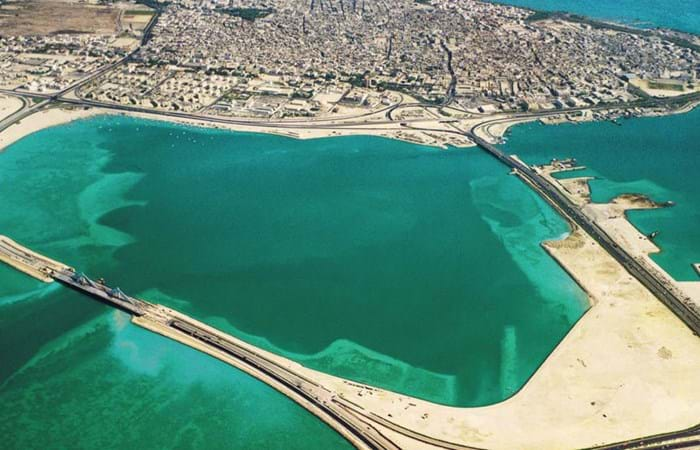The Shaikh Khalifa Bin Salman Causeway is located in the State of Bahrain in an expanse of water called the Khawr Al Qulayah. It connects the Hidd Drydock Highway to the Mina Sulman Port. This major infrastructure project is carried out in advance of the planned expansion of the Bahrain port activities. This New Port project is planned at the Hidd side and via the Shaikh Khalifa Bin Salman Causeway direct connected with the existing Mina Sulman port and Saudi Arabia. The total length of the Shaikh Khalifa Bin Salman Causeway is approximately 6,500 m, including a bridge of 400 m, which was constructed in 2000.
The project for the land reclamation and slope protection works was awarded as a lump sum Design and Construct Contract and executed under a full Quality Assurance system. The Client was represented by a team of his own staff, which had the task to control the Contractor’s procedures as laid down in the Project Quality Plan and randomly attend the numerous testing procedures. During the preparation stage of the project Hydronamic has been involved in the review and optimisation of the design as laid down by the Client in order to advise Boskalis Westminster Middle East for taking over the design responsibility in the contract. Later on during the construction phase, Hydronamic assisted on site by the implementation of the quality system, the execution and interpretation of testing procedures, the reporting, planning and several design and engineering issues.
